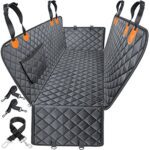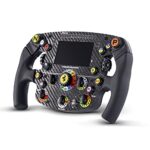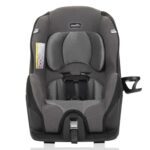Calibrating your speedometer after installing a supercharger is crucial. It ensures accurate speed readings and safety on the road.
Superchargers can enhance your car’s performance but can also alter speedometer accuracy. When your car’s speedometer isn’t correctly calibrated, it can lead to faulty speed readings. This miscalculation can affect your driving and even result in speeding tickets. Knowing how to calibrate your speedometer after a supercharger installation is essential.
In this blog post, we’ll guide you through the steps to achieve accurate speedometer calibration. This process will help you maintain precise speed readings and ensure your vehicle’s performance and safety. Stay tuned to learn the necessary steps for proper calibration.
Tools And Equipment
Calibrating your speedometer after installing a supercharger is crucial. You need the right tools and equipment to get accurate readings. This ensures your vehicle performs at its best. Let’s dive into the essential tools and recommended equipment you need for this task.
Essential Tools
To begin, you need a basic set of tools. These are necessary for any adjustments or installations:
- Screwdrivers – Both flathead and Phillips head types.
- Wrenches – A set of both metric and standard sizes.
- Socket Set – Ensure you have various sizes for different bolts.
- Torque Wrench – To apply the correct amount of torque.
- Multimeter – For checking electrical connections.
Recommended Equipment
Besides the basic tools, certain equipment can make the calibration process smoother and more accurate:
| Equipment | Description |
|---|---|
| OBD-II Scanner | This tool reads the vehicle’s onboard diagnostics. It helps identify any issues during calibration. |
| Speedometer Calibration Device | Specialized devices are available. They help in accurately adjusting the speedometer reading. |
| GPS Speedometer | Provides an accurate speed reading. This is useful for comparison and calibration. |
Having these tools and equipment ready will streamline the calibration process. You’ll ensure your speedometer displays the correct speed after installing a supercharger.
Preparation Steps
Calibrating your speedometer after installing a supercharger is crucial. Accurate readings ensure safety and optimal performance. Proper preparation is the first step in this process. Follow these steps for a smooth calibration.
Safety Precautions
Safety should always come first. Begin by wearing protective gear. Gloves and safety glasses are essential. Ensure your workspace is well-lit. Ventilate the area if working indoors. A well-ventilated space prevents inhaling harmful fumes.
Turn off your engine before starting any inspection. Double-check that your car is in park. Use wheel chocks to prevent any movement. A stable car ensures a safe working environment.
Initial Vehicle Inspection
Inspect your vehicle thoroughly. Look for any signs of wear or damage. Check the tires for proper inflation. Properly inflated tires affect speedometer accuracy. Inspect your brakes for wear and tear.
Examine the supercharger installation. Ensure all connections are secure. Look for any leaks or loose parts. A well-installed supercharger ensures better performance. Finally, check the battery. A fully charged battery is essential for calibration.
Calibration Methods
After installing a supercharger, your vehicle’s speedometer may need recalibration. This ensures accurate speed readings. There are various calibration methods available to achieve this. Below, we explore two main techniques.
Manual Calibration
Manual calibration involves adjusting the speedometer settings yourself. Start by checking your vehicle’s manual for specific instructions. Some vehicles have built-in calibration modes. These modes allow you to adjust the speedometer using the dashboard controls.
First, find a straight, flat road. Drive at a steady speed. Use a GPS device to verify your speed. Compare the GPS reading with your speedometer. If there is a difference, adjust the settings. Continue this process until both readings match.
Using Calibration Devices
Calibration devices offer a more precise method. These devices connect to your vehicle’s speedometer system. They provide accurate adjustments based on real-time data. Purchase a reliable calibration device from a trusted supplier.
Follow the manufacturer’s instructions for installation. Connect the device to your vehicle’s diagnostic port. Input the necessary data, such as tire size and gear ratio. The device will automatically adjust the speedometer.
Calibration devices often come with user-friendly interfaces. This makes the process simple and efficient. Ensure you follow the steps carefully for the best results.
Using Gps For Calibration
Calibrating your speedometer after installing a supercharger is essential. Using GPS for calibration is one of the most accurate methods. This process ensures your speedometer shows the correct speed, enhancing both safety and performance.
Setting Up Gps
First, you need a reliable GPS device or app. Ensure the device is fully charged. Mount the GPS device securely on your dashboard. This position allows for clear satellite reception. Turn on the GPS and wait for it to connect to satellites.
Comparing Gps Data
Start driving your vehicle at a steady speed. Observe the speed reading on your GPS device. Compare this reading with your vehicle’s speedometer. If there is a difference, note the discrepancy. Use this data to adjust your speedometer settings.
Continue driving at different speeds. Compare the readings at each speed level. Make further adjustments as needed. Recheck the speed readings to ensure accuracy. Repeat this process until your speedometer matches the GPS speed.
Testing And Verification
Testing and verification ensure your speedometer functions accurately after installing a supercharger. This phase involves a few critical steps. You’ll need to confirm that the speed readings are correct. If not, adjustments are necessary. Here’s how you can proceed with this process.
Road Testing
Start with a simple road test. Drive your car on a straight, flat road. Use a GPS device to track your actual speed. Compare this to your speedometer reading. Note any discrepancies. Repeat this process several times to get consistent data.
Adjusting Based On Results
After the road test, it’s time to adjust. If the speedometer shows a higher speed than the GPS, it needs calibration. Use the calibration button on your speedometer. Follow the manufacturer’s instructions for precise adjustments. Test again to ensure the speedometer matches the GPS reading. Repeat as needed until the readings align.

Credit: www.amazon.com
Common Issues And Solutions
Calibrating a speedometer after installing a supercharger can be tricky. Several common issues may arise. Knowing these problems and their solutions is key. This guide will help you troubleshoot common errors.
Troubleshooting Calibration Errors
Calibration errors can cause your speedometer to read incorrectly. This is often due to incorrect settings or faulty connections. Check all wiring connections first. Ensure they are secure and not damaged.
Next, verify the calibration settings. Incorrect input values can lead to errors. Consult the supercharger and speedometer manuals. Follow the guidelines for proper configuration.
Dealing With Inconsistent Readings
Inconsistent speedometer readings can be frustrating. This can occur due to fluctuating power supply or sensor issues. Inspect the power connections. Ensure the supercharger receives stable power.
Next, check the speed sensor. A faulty sensor can cause erratic readings. Replace the sensor if it shows signs of damage. Regular maintenance can help prevent these issues.
Expert Tips
Calibrating your speedometer after installing a supercharger can be tricky. With the right guidance, you can ensure accurate readings for safe driving. Here are some expert tips to help you with the process.
Maintaining Calibration
Consistency is key. Regular checks ensure your speedometer remains accurate. Follow these steps:
- Check your tire pressure monthly. Incorrect pressure affects speed readings.
- Inspect your tires for uneven wear.
- Use a GPS device to cross-check your speedometer.
- Update your vehicle’s software when available.
Maintaining a regular schedule helps. It ensures that your speedometer stays accurate over time.
When To Seek Professional Help
Sometimes, you need expert assistance. Here are situations where a professional is necessary:
- Your speedometer shows erratic readings.
- You’ve tried recalibrating but see no improvement.
- Your vehicle’s performance changes drastically.
- Complex electronic systems make DIY adjustments risky.
In these cases, it’s best to rely on a skilled technician. They have the tools and knowledge to fix the issue correctly.
Credit: www.tiktok.com
Credit: www.gsxs1000.org
Frequently Asked Questions
How Do I Calibrate My Speedometer?
To calibrate your speedometer, use a GPS device to compare speeds. Adjust your car’s speedometer settings accordingly. Consult your vehicle’s manual for specific instructions.
Why Does A Supercharger Affect The Speedometer?
A supercharger increases engine power, which can affect speedometer accuracy. Higher speeds may cause the speedometer to display incorrect readings.
Can I Calibrate The Speedometer Myself?
Yes, you can calibrate it yourself. Use a GPS device to compare and adjust speeds. Follow your vehicle’s manual for instructions.
Do I Need A Professional To Calibrate My Speedometer?
It’s not always necessary. However, if you’re uncomfortable doing it yourself, a professional can ensure accurate calibration.
Conclusion
Correctly calibrating your speedometer after installing a supercharger is crucial. It ensures accurate speed readings, enhancing safety. Follow the outlined steps carefully. Use the right tools for precise adjustments. Regular checks can prevent future issues. Always consult your vehicle’s manual for specific guidance.
This process may seem complex, but it’s manageable. Accurate speed readings keep you compliant with traffic laws. Stay safe and enjoy your supercharged ride.
[mc4wp_form id="5878"]Last modified: January 20, 2025









